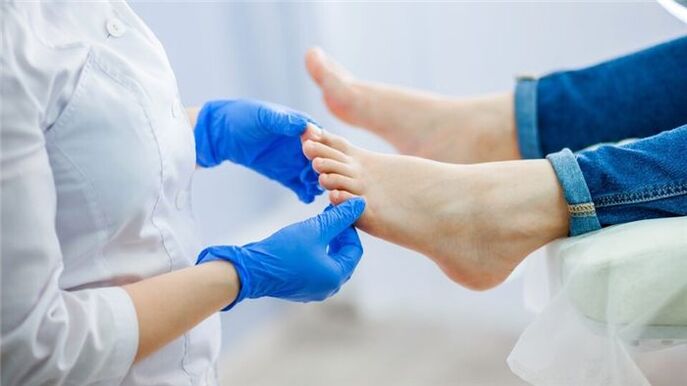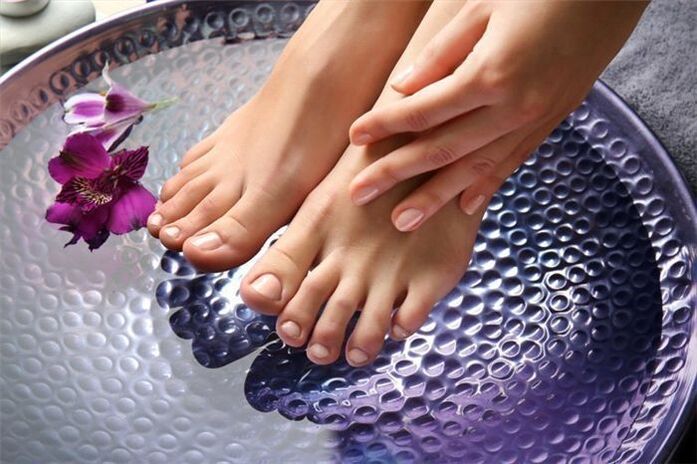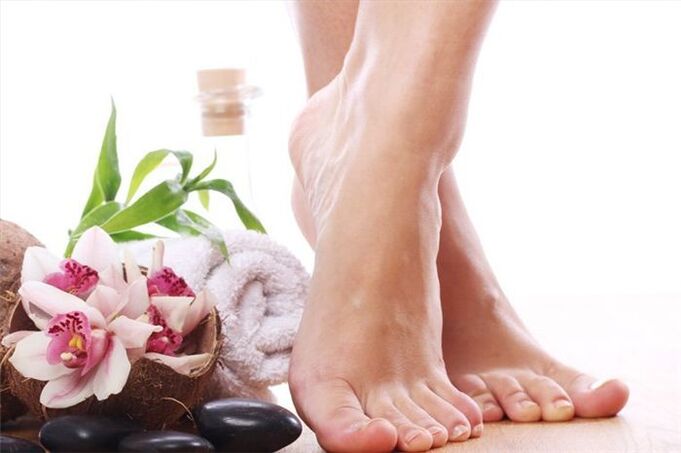Fungal nail infections (onychomycosis) require long-term and complex treatment. Broad-spectrum antifungal tablets effectively fight pathogenic microorganisms, eliminate the symptoms of the disease and improve the condition of the nails.
Classification of antifungal drugs
Pills have different antifungal effects depending on their structure and mechanism of action.They are divided into types:
PolyeneQuickly kills fungal spores by disrupting their membrane integrity. They are well tolerated by the body and do not have a negative effect on the liver and digestive system.
To treat fungal infections in the early stages, people use topical medications - solutions, varnishes or creams, hydrogen peroxide.
It is recommended to treat fungus with pills when ointments, creams, oils, sprays and other topical medications do not bring results.
Effective nail fungus treatment
The pharmaceutical market offers many antifungal drugs in tablet form, differing in the main active ingredient, manufacturer and price.
Active:
- Terbinafine hydrochloride
- Fluconazole
- Terbinafine
- Ketoconazole
- Itraconazole
- griseofulvin
- Itraconazole
- Ketoconazole
- Terbinafine
- Natamycin
When choosing a medication, you must take into account the type of fungal infection and the severity of the disease. Before starting treatment, it is necessary to accurately establish the nature of onychomycosis, since many drugs affect only a certain group of pathogens.
A drug based on terbinafine hydrochloride
This is an antifungal drug in pill form that has a pathogenic effect on pathogenic microorganisms that cause onychomycosis. Contains active ingredients of the same name. The product helps destroy the outer membrane of pathogenic fungi, leading to the destruction of the fungus.
The inexpensive pills are used to treat onychomycosis, onychomycosis, and ringworm.Main contraindications:
- CKD;
- children under 3 years old;
- Pregnancy and lactation period;
- Hypersensitivity to terbinafine.
The drug can cause side effects - headache, nausea, loss of appetite, indigestion, abdominal pain.
With long-term use, you need to systematically monitor liver function and stop drinking alcoholic beverages.
The recommended dosage is 1 tablet per day. The duration of treatment is determined individually. In severe stages of onychomycosis, use is allowed for 8-12 weeks.
A drug that belongs to the triazole class of antifungals
An effective drug with antifungal effect, produced in various pharmacological forms. The drug is used to eliminate fungal infections, as well as for preventive purposes. It is allowed to be used for liver diseases, but under the supervision of a doctor.
Main contraindications for use:
- kidney disease;
- exacerbation stages of psoriasis and other dermatological diseases of an inflammatory nature;
- pregnancy;
- Individual intolerance to the active ingredients in Fluconazole.
To treat nail fungus, the drug is taken once daily for 4 weeks. After that, the dosage is reduced to 1 tablet every 7 days. The product has a cumulative effect - after 4-5 days of use, a high concentration of the substance accumulates in the horny layer of the nail plate.
To prevent remission, the drug must be taken until the healthy nail plate is completely developed.
In rare cases, the drug causes side effects such as nausea, stomach pain, itching and burning in areas affected by the fungus, and various allergic reactions.
A drug based on terbinafine hydrochloride 10 mg
This is an antifungal drug that is highly effective against a wide variety of fungal microorganisms. The active ingredient terbinafine inhibits sterol biosynthesis in fungal cells, leading to rapid destruction of infectious agents.
The drug is well tolerated by the body and has a minimal number of contraindications for use - severe forms of kidney disease, increased sensitivity to the active ingredients contained in its composition. Approved for use in liver diseases.
For adults, take 1 tablet daily for 3-6 weeks. To treat advanced stages of toenail fungus, the treatment period is increased to 10-12 weeks.
In extremely rare cases, it causes headaches, nausea, a feeling of fullness in the stomach, allergic manifestations and skin rashes.
A drug based on ketoconazole
Ketoconazole is one of the most powerful antifungal agents. It is used for severe, progressive systemic fungal infections.
It should be used if the nail plates are completely damaged, while nearby soft tissues are affected. In addition, the drug is prescribed if topical antifungal drugs do not bring satisfactory results.
Approved for use in liver diseases, but best under a doctor's supervision and with regular liver testing.
The drug cannot be used to treat nail fungus in children under 12 years old, pregnant and lactating women, as well as individual intolerance.
Side effects: attacks of nausea and vomiting, flatulence and abdominal pain, conjunctivitis, allergic rashes on the skin, lethargy, nervousness, in men - temporary decrease in sexual desire.
The recommended dosage for onychomycosis is 1-2 tablets per day, depending on the severity of the fungal infection. Treatment duration is 4-5 weeks.
Preparation based on itraconlose 0. 1 g
Itraconazal is used in inexpensive toenail fungus medications. It inhibits ergosterol in the cell membranes of pathogenic microorganisms and has a detrimental effect on most known pathogens of onychomycosis. Tablets containing inconazole are used to treat fungal infections, regardless of the location and degree of damage.
The drug should not be used in case of exacerbation of kidney disease, as well as hypersensitivity to the active ingredients contained in its composition. For liver diseases, it is used during remission.
A cheap and effective drug can cause negative reactions - the development of shortness of breath, flatulence, stomach pain, headache and dizziness. In rare cases, the medication may cause soft tissue swelling.
To treat onychomycosis of the nails, take 1 tablet in the morning and evening for 10-12 weeks. After that, the drug is administered in weekly courses with a break of 2-3 weeks.
A drug based on itraconlose
The antifungal effect of the drug is provided by the active ingredient itraconazole. For fungal infections of fingernails and toenails, the drug is taken 2 tablets once a day or divided into two doses. The duration of treatment is from 8 to 12 weeks.
At home it can also be used for weekly therapy. After taking the medicine for 7 days, take a break for 3 weeks, then continue treatment. For fungal infections of the nail plate, at least 3 courses of treatment are required. Tablets are taken in 2 pieces, morning and evening.
The drug is well tolerated by the body. In rare cases, side effects may develop - nausea, constipation, skin allergies, headaches, loss of appetite, nervousness, feeling tired, loss of strength. In case of more severe liver disease, use with caution.
The drug is based on Itraconazole 100 mg
The antifungal drug contains the active ingredient itraconazole 100 mg, which destroys the fungal membrane and leads to the death of pathogenic microorganisms. It is a broad-spectrum drug, which is why it is prescribed for onychomycosis in advanced stages.
The drug should not be used in case of heart failure or low blood sucrose levels. The drug should be used with extreme caution if you are fructose intolerant.
For fungal nail infections, take 1 tablet in the morning and evening, 20-30 minutes after meals. The average course of treatment is 2-3 weeks. Reception stops only after healthy nail plates grow back.
Taking the drug may be accompanied by side effects - nausea, vomiting, discomfort in stool, loss of appetite, headache, dizziness, peripheral neuropathy, skin rash. In some cases, women may experience irregular menstruation. In case of more severe liver disease, use with caution.
Drug based on ketoconazole 200 mg
This is a broad-spectrum drug that has antifungal and antibacterial effects. The main active ingredient in the product is ketoconazole which is highly effective against skin bacteria, eumycetes, dimorphic fungal pathogens and yeasts.
To treat nail fungus, take 1-2 tablets a day. The exact dosage of the drug is determined by the doctor depending on the severity of the disease. The average duration of the therapy course is 12-15 weeks.
The drug should not be used during pregnancy, breastfeeding or treating children under 3 years of age.
In case of more severe liver disease, use with caution. Tablets can cause negative reactions from internal organs - discomfort in stools, nausea, vomiting, skin rash, drowsiness, loss of strength.
The use of the drug in men in some cases is accompanied by a decrease in sexual activity and impaired erectile function, which negatively affects sex life.
Brief summary
Effective and inexpensive antifungal drug, produced in tablet form, is used to treat fungal infections of nail plates of various origins. They are prescribed when ointments, gels and other external means do not bring the desired results.
Broad-spectrum tablets are effective against most pathogenic microorganisms and fungal pathogens. Treatment of fungal diseases is long and complicated, requiring medication until healthy nail plates grow back.
Effective antifungal medicine
Your nails are turning yellow and peeling, do you have dandruff or thrush? All of these are symptoms of a fungal infection, which means treatment is indispensable. Let's talk with experts about what effective antifungal drugs exist and how to choose them correctly

Mycoses or fungal infections are a very common disease. Fungi commonly affect the skin, mucous membranes, and nails, but can also affect internal organs. Fortunately, effective antifungal drugs can cope with almost any disease. The main thing is to choose the right remedy.
How to choose antifungal medication
A banal but correct answer is to consult a doctor, who will diagnose and prescribe medication. It's easy to make mistakes when self-diagnosing because fungal infections have similar symptoms to many other diseases. For example, the same "thrush" can turn into bacterial vaginosis, which requires completely different treatment. In addition, we must remember that inappropriate long-term treatment will worsen the course of the disease.

Fungal nail infections are the easiest to diagnose, although errors can occur here too. If you treat yourself, remember that ointments, gels and creams on the nails have no effect, only liquids and varnishes. An important point that many people do not consider is that the affected nail must be cut off before applying the medication. If this is not done, the medicine will not reach the lesion. If the matrix (area of active growth of the nail) is damaged, treatment with tablets and injections along with topical treatments is required 4.
How to use antifungal paint properly
One of the important features of using antifungal drugs is that the nail plate must be as clean as possible. To do this, the fungal residue is carefully removed with nail scissors. The nails themselves must be cut short, washed with laundry soap and treated with an alcohol solution.
Varnish is applied with a special brush included in the kit on completely dry nails. Avoid contact with surrounding skin. In this case, it is imperative to follow the instructions. To enhance the effect of the polish, you should wear light cotton socks throughout the treatment, change them daily, and wear loose-fitting shoes that do not squeeze your toes.
The most effective way to treat toenail fungus
Nail fungus needs to be treated at the first sign of the disease. The earlier the problem is diagnosed and the course is started, the greater the chance of successfully eliminating the fungus with minimal consequences. Even among the most effective nail fungus treatments, you must choose the most suitable option.
How to choose effective nail fungus treatment
Treating fungal diseases is a long process. Sometimes dermatologists offer multiple options for drugs belonging to the same pharmacological group. Considering the prices of modern antifungal drugs, a course of treatment often costs a significant amount.
Therefore, in some cases, after consulting a doctor, it may be advisable to choose a cheaper analogue with the same active ingredient or similar in its pharmacological properties. In order not to make a mistake in choosing, it is necessary to take into account patient reviews about the most popular drugs.
Medicines to treat nail fungus are divided according to method of use:
- external preparations intended for local treatment of affected surfaces (sprays, ointments, creams, varnishes);
- The preparations inside have a systemic antifungal effect on the entire body (capsules, tablets).
Among fungi there are many pathogenic species, the exact cause of the disease will be determined by the doctor after analysis. In advanced cases, the analysis may reveal several types of pathogenic fungi, and each type of fungus will require its own medication.
How to determine if your nails are affected by fungus
Nail fungus is characterized by inflammation, pain and swelling of the fingers, as well as yellow and crumbly nails. The nails appear deformed with inflamed skin and ridges around the nails. There is peeling and brittleness of the nails, the fingers look unkempt. In severe cases, tissue begins to die and exposes the nail bed.
What groups of antifungal drugs are there to treat nail fungus?
Among fungal diseases, there are some that are difficult to treat and tend to recur. If you violate the treatment regimen and stop the course as soon as the obvious symptoms of the disease disappear, the lesion will return in a more complex form, and its removal will be much more difficult.
When treated with any medicine, even the most expensive medicine, you cannot cure it with just a single pill, nail fungus takes time and patience.

Do not self-treat. At the first sign of nail fungus, you should see a dermatologist.
azole group
Antifungal drugs based on the active ingredients imidazole and triazole have a dual effect:
- fungicidal - destroys the cells of pathogens;
- fungicidal - destroys fungal spores and prevents them from reproducing.
These products show good activity against yeasts, molds and yeast-like fungi. Azole group drugs are available in different forms: for oral use - tablets and capsules, for external use - ointments, creams, varnishes, solutions.
Capsules and tablets are taken as prescribed by the doctor according to the recommended regimen. Usually, this is a continuous course, but a different treatment regimen may also be used, scheduled over several months (up to six months) while healthy nails grow. Ointments and creams are rubbed into the affected nail plates several times a day.

Before treatment, you first need to cut your nails at the root and soak your feet with soda soap.
Allylamine group
Drugs based on allylamines quickly eliminate unpleasant symptoms of fungal nail infections: burning and itching. This active ingredient is active against fungi of the genus Candida, dermatophytes, as well as molds; Pathogens are destroyed by destroying their cell membranes.
Creams and sprays are applied to the affected nails 1-2 times a day after hygienic procedures: cut nails, take a soapy bath, dry thoroughly.
For local treatment, drugs of the allylamine group should be used if the pathogen affects less than half of the surface of the nail plates and the substrate is not affected. If not, use systemic medications to kill the infection.

The medicine must be rubbed into the surface, touching the surrounding skin.
Morpholin group
The drug belongs to the morpholine group containing amorolfine as the main active ingredient. The most convenient medicinal form of this group is considered varnish.

Varnish is applied to the affected nails and does not peel off for 1-2 weeks, a new layer is regularly applied to the old one.
Before painting, the affected surface of the nail must be steamed, dried and degreased. When treating nails with antifungal varnish, be sure to adhere to strict hygiene measures: use only disposable files, sterilize spoons.
Preparations from the morpholine group show good effects against many types of fungi, penetrate into the nail plate and quickly begin to act. Treatment can last 9-12 months until the nail is completely restored.



























